
Giovanni Ambrogio Figino was an Italian Renaissance painter from Milan.
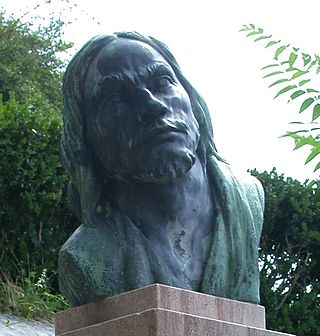
Pordenone, Il Pordenone in Italian, is the byname of Giovanni Antonio de’ Sacchis, an Italian Mannerist painter, loosely of the Venetian school. Vasari, his main biographer, wrongly identifies him as Giovanni Antonio Licinio. He painted in several cities in northern Italy "with speed, vigor, and deliberate coarseness of expression and execution—intended to shock".

Girolamo Romani, known as Romanino, was an Italian High Renaissance painter active in the Veneto and Lombardy, near Brescia. His long career brought forth several different styles.

Antonio d'Enrico, called Tanzio da Varallo, or simply il Tanzio was an Italian painter of the late-Mannerist or early Baroque period.

Giacinto Gimignani was an Italian painter, active mainly in Rome, during the Baroque period. He was also an engraver in aquaforte.
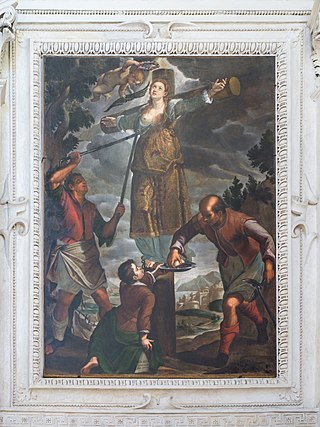
Grazio Cossali, sometimes called Orazio Cossali was an Italian painter who worked in Brescia, Cremona, and Venice, active during the Mannerist or early Baroque periods.
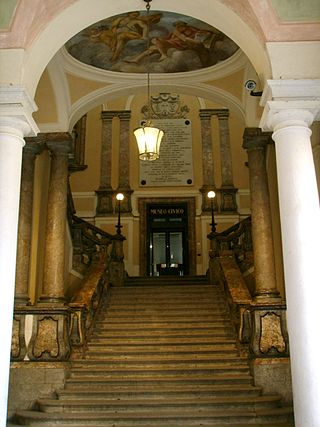
Museo Civico Ala Ponzone is a public museum and art gallery located in the 16th-century Palazzo Affaitati in Cremona, Italy.

Antonio del Massaro da Viterbo, or Antonio da Viterbo, nicknamed il Pastura was an Italian painter.
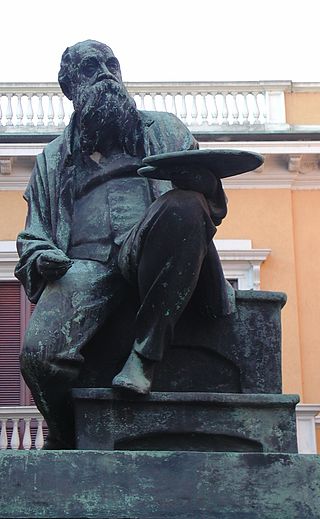
Mosè Bianchi (1840–1904) was an Italian painter and printmaker.

Francesco Podesti was an Italian painter, active in a Romantic style. Together with Francesco Hayez and Giuseppe Bezzuoli, he is considered one of the greatest Italian painters of the first half of the 19th century. He was prolific in his large canvases on historical subjects. He is best known for his fresco work, including those in the Hall of the Immacolata in the Vatican Museum.
Cherubino Cornienti was an Italian painter, active in a Romantic style mainly in Northern Italy.

Giulio Cesare Arrivabene was an Italian painter, active initially in a neoclassical style, mainly painting historic and religious canvases. He also was active as a portraitist.

Pompeo Marino Molmenti was an Italian painter.
Virgilio Ripari ) was an Italian painter, mainly depicting genre scenes of women and flowers. His style is described as a late Romantic, often depicting nuns and scene galanti.
Alessandro Scorzoni was an Italian painter, who depicted eclectic subjects, including sacred images, allegorical paintings, portraits, and landscapes.

Cosroe Dusi was an Italian painter in the Neoclassical style, active for many years in St Petersburg, Russia, painting mainly sacred and historical subjects. Dusi was nicknamed by his contemporaries the "modern Tintoretto", for his liveliness of invention and rapidity at painting.
Santi Clemente e Imerio is a 17th-century Roman Catholic church on Via Aporti 16, in Cremona, region of Lombardy, Italy.
Meo di Pero, also called Meo di Piero was an Italian painter active in Siena in a Gothic style. He worked in the studio of Cristoforo di Bindoccio. All the latter paintings are generally co-attributed to Meo, since no independent work is known.
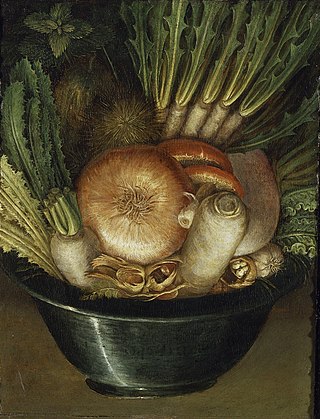
The Gardener, The Vegetable Gardener or Vegetables in a Bowl is a 1587–1590 oil on panel painting by Giuseppe Arcimboldo, now in the Museo Civico Ala Ponzone in Cremona, Italy. One way up it shows a bowl of vegetables - the other way up it shows a human face by pareidolia. The face includes several suggestions of the male and female genitalia, meaning that it can be interpreted as Priapus, the ithyphallic pagan god of fertility and protector of gardens. The same painter also produced The Fruit Basket and The Cook.
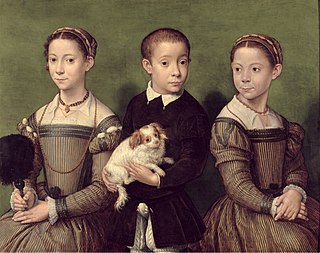
Anna Maria Anguissola was a 16th-century Italian painter born in Cremona, Italy.















